|
|
March 21, 2012
|
|
|
|
Multifunctional Structural Composites for
Antenna Integration
|
|
|
|
|
|
|
|
Professor Mark
Mirotznik
|
|
|
|
Bio
|
|
|
|
Professor Mark S.
Mirotznik received the B.S.E.E. degree from Bradley
University, Peoria, IL, in 1988 and the M.S.E.E. and Ph.D. degrees from the
University of Pennsylvania, Philadelphia, in 1991and 1992, respectively.
From 1992 to 2009, he was a faculty member in the Department of Electrical
Engineering at The Catholic University of America, Washington, DC. Since
2009 he is an Associate Professor and Director of Educational Outreach in the
Department of Electrical and Computer Engineering at the University of
Delaware, Newark DE. In addition to his academic positions he an
associate editor of the Journal of Optical Engineering and also holds the
position of Senior Research Engineer for the Naval Surface Warfare Center
(NSWC), Carderock Division. He is the recipient of the 2010 Wheeler Prize
Award for Best Application Paper in the IEEE Transactions on Antennas and
Propagation. His research interests include applied electromagnetics,
computational electromagnetics and multifunctional materials.networks and dielectric loading of
the composite's polymer matrix.
|
|
|
Presentation
|
|
|
Contact the speaker
|
|
|

|
|
|
|
Abstract
|
|
|
|
Woven fabric composites are a
popular core building block material of many commercial and military
platforms. The composite's high strength to weight ratio, low cost and
good thermal properties are among some reasons for their popularity. Conventional composites are composed of layers
of woven fabrics, usually consisting of glass, polymer or carbon fibers that
are held together by a polymer matrix or resin. Decades of military,
academic and industrial research have gone into the design and manufacturing of
composites whose mechanical properties are optimized. Much more recently,
material researchers have begun to investigate ways to create composites that
have other attractive material properties beyond their mechanical strength,
such as electromagnetic (EM) properties. By tailoring the electromagnetic
properties of structural composites it may be possible to integrate antennas,
create wideband structural radomes, develop RF transparent armor, embed
frequency selective surfaces as well as other electromagnetic components
directly into the structural skin of future commercial and military vehicles
and structures.
In this presentation Professor
Mirotznik will discuss a number of computational and experimental methods used
for the design and fabrication of structural composites with attractive
electromagnetic properties. Examples include texturing the composite's
surface for wideband impedance matching (e.g. moth-eye approach), integration
of 3D conductor networks and dielectric loading of the composite's polymer
matrix.
|
|
|
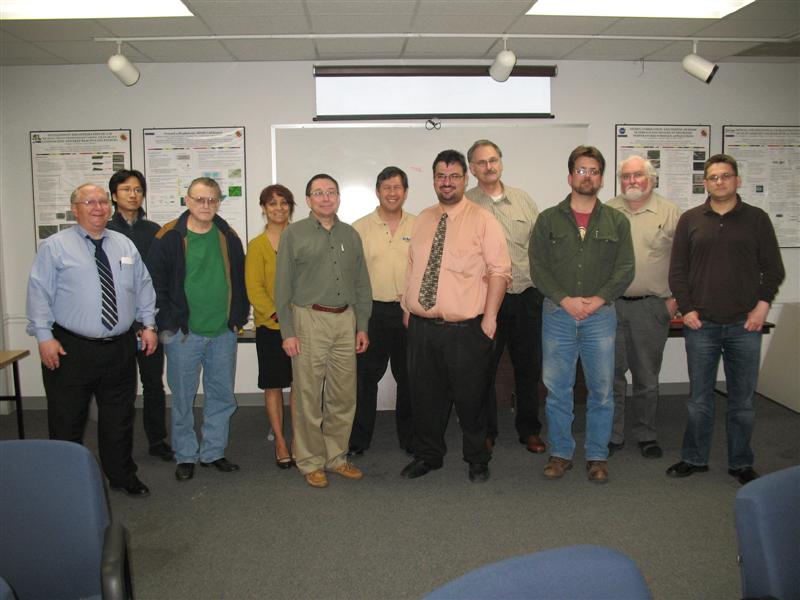
|
|
|
|
|
|
|
|
|
|
April 17, 2012
|
|
|
|
Multifunctional
Structural Composites for Antenna Integration Navigation Signals and Antenna
Measurements in Multipath Environments
|
|
|
|
|
|
Mr. Heinz Wipf
|
|
|
| Bio |
|
|
|
Heinz
Wipf received his Ing. HTL diploma (BSEE) in communication and computer science
from the Technikum in Winterthur Switzerland. He holds additional degrees in
electromagnetic compatibility, applied statistics, technology management and
economics from the Swiss Institute of Technology in Lausanne and Zurich. Since
1982 he is working with the Swiss Air Navigation Services Ltd. primarily in the
fields of navigation, business development and program management both
operational and technical. Before he has been with Siemens in research and
development working on private branch exchanges. He is currently holding two
part time position as lecturer in communication and navigation systems at the
University of Applied Science in Zurich and Winterthur. He is a member of the
IEEE and AIAA. He has participated in a number of international working groups.
He is a patent owner and active as an expert witness on oath in Austria.
|
|
|
Presentation
|
|
|
Contact the Speaker
|
|
|
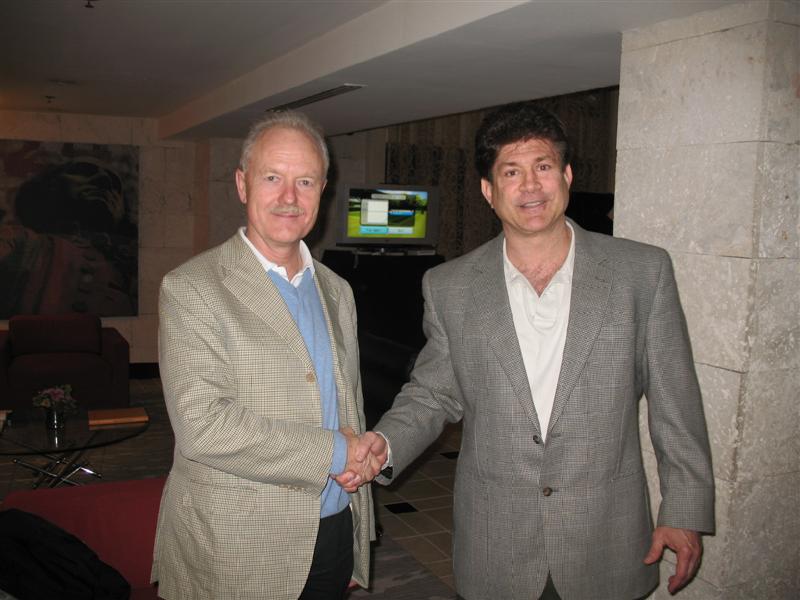
|
|
|
| Abstract
|
|
|
|
Given
a fully approved flight calibration aircraft with standard instrument landing
systems antennas, it can be shown that the receiving pattern of the aircraft
antenna in conjunction with a standard instrument landing systems antenna array
in a typical multipath environment may have a considerable impact on the data
collected.
The results shown stem from realistic
electromagnetic field computations on a typical flight calibration aircraft.
The context is from measurements conducted on a major Swiss airport.
The
3d antenna diagrams will be compared to free space pattern. Results for some
scenarios are presented.
|
|
|
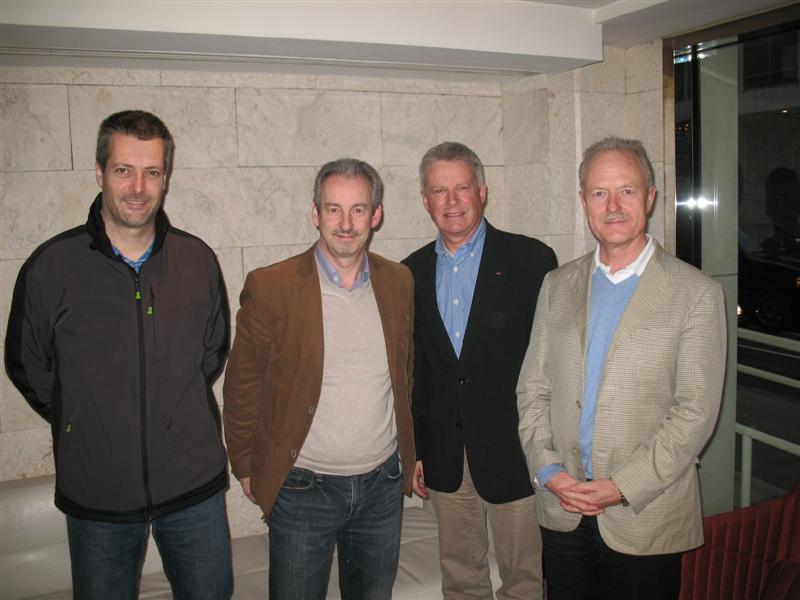
|
|
|
|
|
|
| June 11, 2012
|
|
|
| Efficient Shaped Beam Synthesis in
Phased Arrays and Reflectors |
|
|
| Dr. Arun K. Bhattacharyya |
|
|
| Bio |
|
|
|
Arun K.
Bhattacharyya
received his B.Eng. degree in electronics and telecommunication engineering
from Bengal Engineering College, University of Calcutta in 1980, and the
M.Tech. and Ph.D. degrees from Indian Institute of Technology, Kharagpur,
India, in 1982 and 1985, respectively.
From November 1985 to April 1987, he was with
the University of Manitoba, Canada, as a Postdoctoral Fellow in the electrical
engineering department. From May 1987 to October 1987, he worked for Til-Tek
Limited, Kemptville, Ontario, Canada as a senior antenna engineer. In October
1987, he joined the University of Saskatchewan, Canada as an assistant
professor of electrical engineering department and then promoted to the
associate professor rank in 1990. In July 1991 he joined Boeing Satellite
Systems (formerly Hughes Space and Communications), Los Angeles as a senior
staff engineer, and then promoted to scientist and senior scientist ranks in
1994 and 1998, respectively. Dr. Bhattacharyya became a Technical Fellow of
Boeing in 2002. In September 2003 he joined Northrop Grumman Space Technology
group as a staff scientist, senior grade. He became a Distinguished Engineer which is a very rare and honored recognition
in Northrop Grumman. He is the author of “Electromagnetic
Fields in Multilayered Structures-Theory and Applications”, Artech House,
Norwood, MA, 1994 and “Phased Array
Antennas, Floquet Analysis, Synthesis, BFNs and Active Array Systems”,
Hoboken, Wiley, 2006. He authored over 95 technical papers, 4 book-chapters and
has 15 issued patents. His technical interests include electromagnetics, printed
antennas, multilayered structures, active phased arrays and modeling of
microwave components and circuits.
Dr. Bhattacharyya became a Fellow of IEEE in
2002. He is a recipient of numerous awards including the 1996 Hughes Technical
Excellence Award, 2002 Boeing Special Invention Award for his invention of High
Efficiency horns, 2003 Boeing Satellite Systems Patent Awards and 2005 Tim
Hannemann Annual Quality Award, Northrop Grumman Space Technology.
|
|
|
Presentation
|
|
|
contact the speaker
|
|
|

|
|
|
| Abstract |
|
|
| Shaped beam array
synthesis invites considerable attentions because arrays offer in-orbit
reconfigurability, which is an attractive feature for communication and
broadcasting satellites. In this talk, we present a brief overview of commonly
used beam shaping algorithms. This is followed by the Projection Matrix Method
of synthesis. The Projection Matrix method relies on orthogonal projection of
the desired far field intensity vector onto the space spanned by the far field
intensity vectors of the array elements. It is found that for a uniform
convergence of the solution the far field sample space must be extended beyond
the coverage region, otherwise the projection matrix becomes ill-conditioned. A
general guideline for the far field sample space is provided. The method, with
necessary amendments, is then employed successfully for a reflector surface
synthesis. The method is found to be several times faster than the gradient
search method commonly used for beam synthesis. Numerical results for array and
shaped reflector syntheses are shown and the advantages are discussed), integration of 3D
conductor networks and dielectric loading of the composite's polymer matrix |
|
|
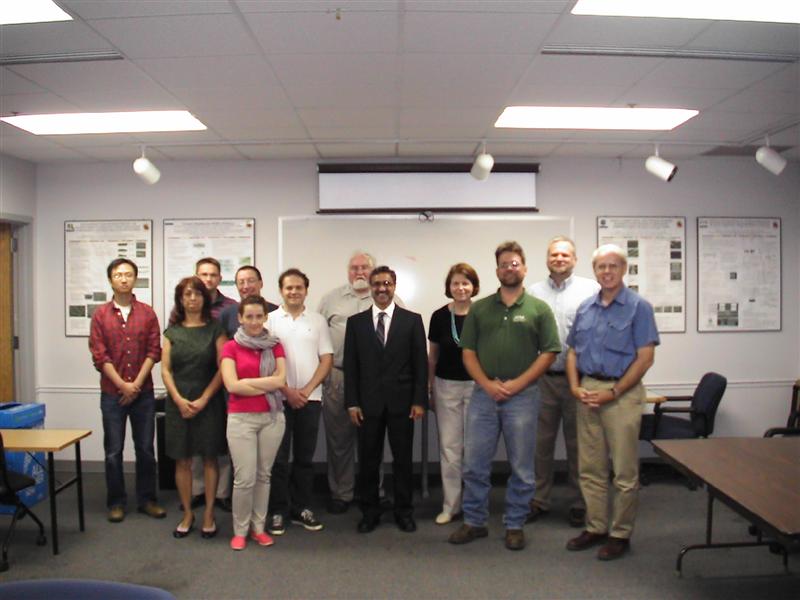
|
|
|
|
|
|
| August 8, 2012 |
|
|
| CEM Algorithms for Multi-Scale Electrodynamic
Problems:Scattering |
|
|
|
Professor Jin-fa
Lee
|
|
|
| Bio |
|
|
|
Professor
Jin-Fa Lee received the B.S.
degree from National Taiwan University, in 1982 and the M.S. and Ph.D. degrees
from Carnegie-Mellon University in 1986 and 1989, respectively, all in
electrical engineering. From 1988 to 1990, he was with ANSOFT Corp. (currently
a subsidiary of ANSYS Inc.), where he developed several CAD/CAE finite element
programs for modeling threedimensional microwave and millimeter-wave circuits.
From 1990 to 1991, he was a post-doctoral fellow at the University of Illinois
at Urbana- Champaign. From 1991 to 2000, he was with Department of Electrical
and Computer Engineering, Worcester Polytechnic Institute. Currently, he is a
Professor at ElectroScience Lab., Dept. of Electrical and Computer Engineering,
The Ohio State University. Prof. Lee becomes an IEEE Fellow on year 2005 and
serves as an associate editor since 2007 for IEEE Transaction on Antenna
Propagation. Moreover, he is serving as a Distinguished Lecturer, term 2011-
2013, for IEEE Antenna Propagation Society. Also, he is a member of the Board
of Directors for Applied Computational Electromagnetic Society (ACES). Dr. Lee
is a special appointed professor of Yuan-Ze University, Taiwan, and a visiting
professor of National mUniversity of Singapore. Among the honors and awards
that Dr. Lee received over the years are: a fellow of Electromagnetic Academy;
a Yuan-Ze Special-Appointed Professor, Yuan-Ze University, Taiwan; the
recipient of 1992 Joseph Samuel Satin Distinguished Fellow Award, WPI; the 1st
International Famous Professor to Beijing Institute of Technology (BIT), 2007;
the recipient of the College Engineering Lumley Research Award, Ohio State
University, 2006 and 2011; the recipient of the Distinguished Scholar Award
from the Ohio State University, 2012; a holder of the Chair of Excellence of
Spain 2012-2013, Universidad Carlos III
de Madrid, Spain; a MINDEF visiting
scientist Singapore, 2010; co-author of ACES 2009 best paper award; and the
supervisor of many best student papers of international symposiums and
conferences.
Dr. Lee’s research interests mainly focus on
numerical methods and their applications to computational electromagnetics.
Current research interests include: analyses of numerical methods, fast finite
element methods, fast integral equation methods, domain decomposition methods,
hybrid numerical methods and high frequency techniques based on domain
decomposition approach, LCD modeling, large antenna arrays, multi-physics
simulations and modeling, and co-design for signal integrity and packaging
|
|
|
Presentation
|
|
|
Contact information
|
|
|
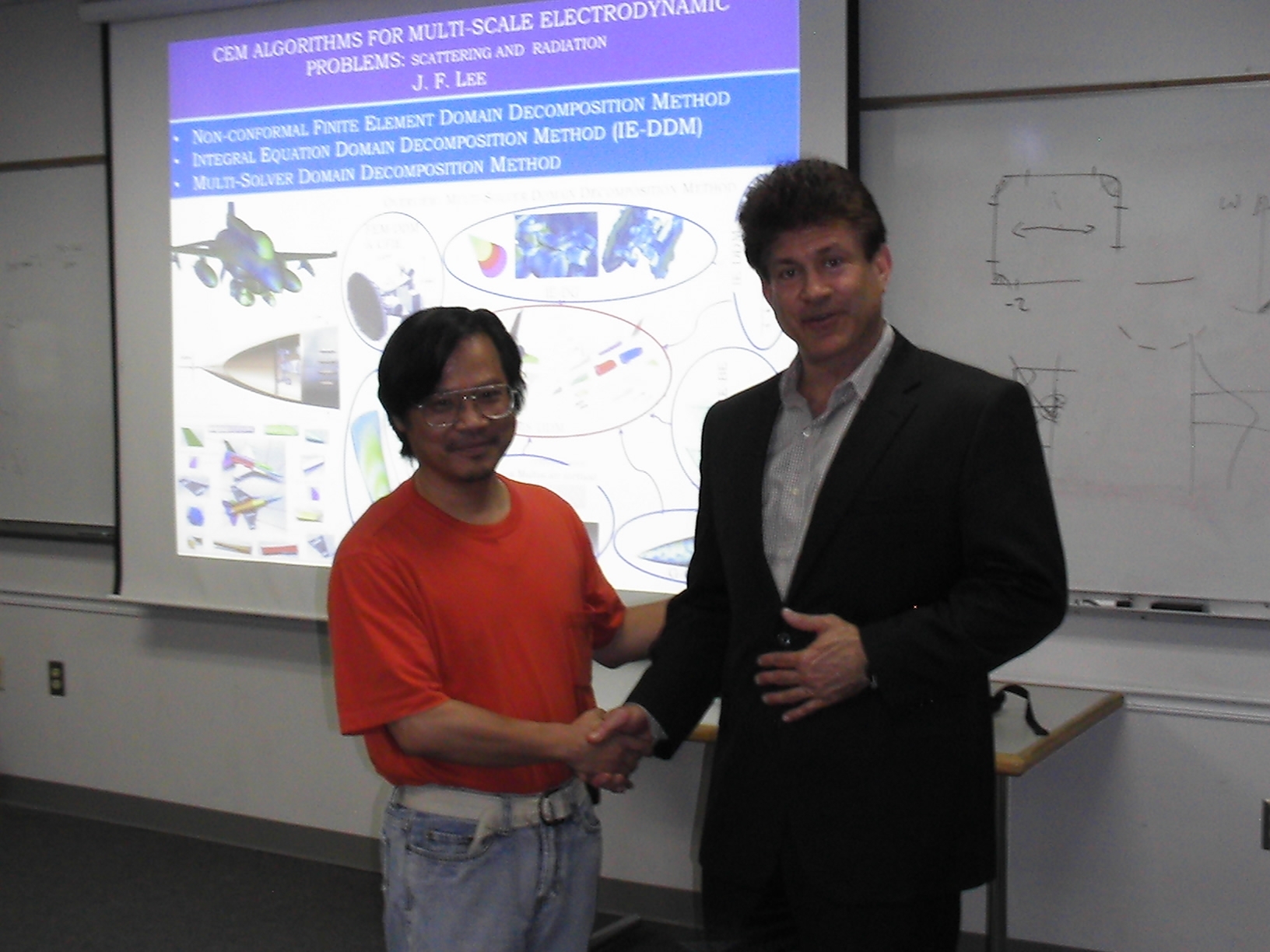
|
|
|
|
Abstract
|
|
|
|
Modern antenna engineering often involves the use of
meta-materials, complex feed structures, and conformally mounting on large
composite platforms. However, such antenna systems do impose significant
challenges for numerical simulations. Not only do they usually in need of
large-scale electromagnetic field computations, but also they tend to have many
very small features in the presence of electrically large structures. Such
multi-scale electromagnetic problems tax heavily on numerical methods (finite
elements, finite difference, integral equation methods etc.) in terms of
desired accuracy and stability of mathematical formulations.
In this lecture, Professor Lee will present his
on-going efforts in combating the multi-scale electromagnetic applications, both
scattering and radiation problems through the use of non-conventional PDE
methods that are non-conformal. The non-conformal numerical methods relax the
constraint of needing conformal meshes throughout the entire problem domain.
Consequently, the entire system can be broken into many sub-problems, each has
its own characteristics length and will be meshed independently from others.
Particularly, our discussions will include the following topics:
Integral Equation Domain Decomposition Method
(IE-DDM): A very significant breakthrough that has been accomplished
is the IE-DDM formulation. For example, Professor Lee will show an
electromagnetic plane wave scattering from a mock-up fighter jet with thin
coatings at the X- and Ku-bands by dividing the platform into many closed
objects, and noting that they will be touching each other through common
interfaces.
Non-Conformal DDM with Higher Order Transmission
Conditions and
Corner Edge Penalty:
By introducing two second-order
transverse derivatives, one for TE and one for TM, the derived 2nd order TC
provides convergence for both the propagating and evanescent modes. Moreover,
on the corner edges sharing by more than two domains, an additional corner edge
penalty term needs to be added in the variational formulation. Consequently,
the robustness of the non-conformal DDMs is now firmly established
theoretically and numerically.
Multi-region/Multi-Solver DDM with Touching
Regions: Many multi-scale physical problems are very difficult, if
not impossible, to solve using just one of the existing CEM techniques. We have
been pursuing a multi-region multi-solver domain decomposition method (MS-DDM)
to effectively tackle such problems. Various CEM solvers are now integrated
into a MS-DDM code and collectively, it emerges as the only alternative for
solving many real-life applications that were thought un-solvable
|
|
|

|
|
|
|
|
|
|
October 5, 2012
First Seminar: Analyses of spherical antennas
Second
Seminar: Development of Dielectric Resonator Antenna
Professor K W Leung
Bio
Professor K W Leung was born in Hong Kong. He received the B.Sc.
degree in Electronics and Ph.D. degree in electronic engineering from the
Chinese University of Hong Kong, in 1990 and 1993, respectively.
From 1990 to 1993, he was a Graduate
Assistant with the Department of Electronic Engineering, the Chinese University
of Hong Kong. In 1994, he joined the Department of Electronic Engineering at
City University of Hong Kong (CityU) and is currently a Professor and an
Assistant Head of the Department. He is also the founding Director of the
Innovation Centre of the Department. From Jan. to
June, 2006, he was a Visiting Professor in the Department of Electrical
Engineering, The Pennsylvania State University, USA.
Professor Leung was
the Chairman of the IEEE AP/MTT Hong Kong Joint Chapter for the years of 2006
and 2007. He was the Chairman of the Technical Program Committee, 2008
Asia-Pacific Microwave Conference, Hong Kong, the Co-Chair of the Technical
Program Committee, 2006 IEEE TENCON, Hong Kong, and the Finance Chair of PIERS
1997, Hong Kong. His research interests include RFID tag antennas, dielectric
resonator antennas, microstrip antennas, wire antennas, guided wave theory,
computational electromagnetics, and mobile communications. He was an Editor for
HKIE Transactions and a Guest Editor
of IET Microwaves, Antennas and
Propagation. Currently, he serves as an Associate Editor for IEEE Transactions on Antennas and
Propagation and received Transactions Commendation Certificates twice in
2009 and 2010 for his exceptional performance. He is also an Associate Editor
for IEEE Antennas and Wireless
Propagation Letters. He has been appointed as a Distinguished Lecturer by
the IEEE Antennas and Propagation Society for 2012-2014
Presentation 1
Presentation 2
Contact the speaker
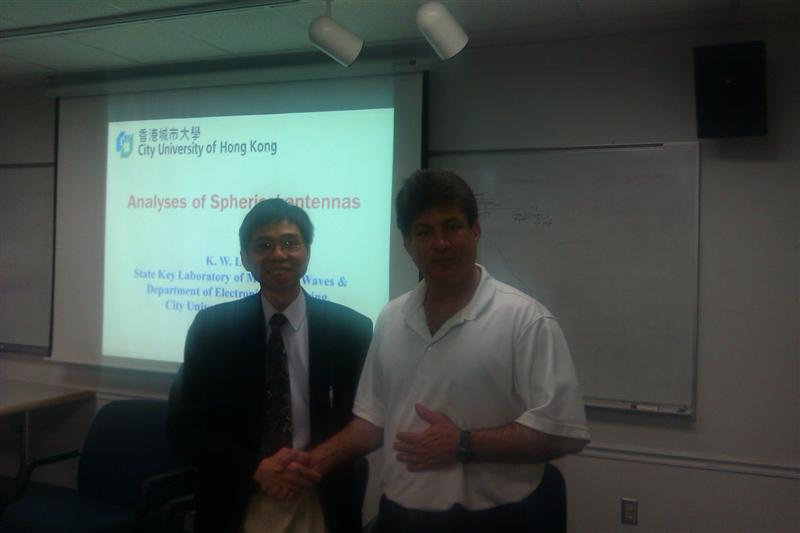
Abstract
First Seminar: Analyses of spherical antennas
The
spherical antenna is an interesting and useful topic. For example, a spherical helical antenna can radiate circularly polarized fields over
a wide beamwidth. An antenna array with its elements distributed over a
spherical surface is able to determine the direction-of-arrival and
polarization of an incoming wave. Further, a spherical antenna array can be
used to avoid the scanning problem of a planar array at low elevation.
The spherical antenna is also important from the
theoretical point of view. Since a spherical structure does not have any
edge-shaped boundaries as found in cylindrical and rectangular structures, its
closed-form Green’s function is obtainable. As a result, an exact solution of a
spherical problem can exist, and the solution can be used as a reference for
checking the accuracy of numerical or approximation techniques.
In this talk, the general solution of Helmholtz
equation in the spherical coordinates will be briefly reviewed. The solution
will be used to solve different spherical antenna problems, including the
spherical slot antenna, spherical microstrip antenna, and grounded
hemispherical dielectric resonator antenna (which is equivalently a dielectric
sphere after imaging). Derivations of their exact modal Green’s functions will
be described. Both electric and magnetic current sources will be considered,
and their integral equations will be formulated using the Green’s functions.
The method of moments (MoM) will be used to solve for the electric or magnetic
current sources. From the currents, the input impedances and radiation patterns
of the spherical antennas can be obtained easily.
When a field point coincides with a source point, the Green’s functions
will become singular and care has to be exercised in evaluating their MoM
integrals. Around a singular point, an extensive number of modal terms are
needed to calculate the Green’s functions accurately. This may lead to
practical problems because amplitudes of high-order Hankel functions can be too
large to be handled numerically. A method that tackles the singularity problem
will be presented. In this talk, integrals involving spherical Bessel functions
or associate Legendre
functions will be evaluated rigorously through analytical
integration or their recurrence formulas. Since numerical integration is
avoided, the evaluations of the integrals are computationally very efficient.
Numerical convergence of the modal solutions will also be examined. Excellent
agreement between theory and experiment is observed and the results will be
presented in the talk. Finally, it will be shown that a spherical solution can
be used to solve a planar annular problem.
only
alternative for solving many real-life applications that were thought
un-solvable
Second
Seminar: Development of Dielectric Resonator Antenna
The fundamentals and
development of dielectric resonator antenna will be discussed in this talk. For
many years, dielectric resonators (DRs) have only been used as high-Q elements
in microwave circuits until S. A. Long and his collaborators showed that they
can also be used as efficient radiators. The studies were motivated by an
observation that carrier frequencies of modern wireless systems had gradually
progressed upward to the millimeter-wave region, where efficiencies of metallic
antennas can be reduced significantly due to the skin effect. In contrast, DR antennas (DRAs) are purely made of dielectric materials with no conductor
loss. This feature makes DRAs very suitable for millimeter-wave systems.
As compared to the
microstrip antenna, the DRA has a much wider impedance bandwidth (~ 10% for
dielectric constant ~ 10). This is because the microstrip antenna radiates only
through two narrow radiation slots, whereas the DRA radiates through the whole
DRA surface except the grounded part. Avoidance of surface waves is another
attractive advantage of the DRA over the microstrip antenna. Nevertheless, the
DRA and microstrip antenna have many common characteristics because both of
them are resonators. For example, both of them can be made smaller in size by increasing
the dielectric constant because the dielectric wavelength is smaller than the
free-space wavelength. Furthermore, basically all excitation methods applicable
to the microstrip antenna can be used for the DRA.
Although the DRA received attention originally for millimeter-wave
applications, it is also widely investigated at microwave or even RF
frequencies. It is because the DRA is a volume device that offers designers
more degrees of freedom than 2D-type antennas (e.g., microstrip antennas) or 1D-type
antennas (e.g., monopole antennas). Other advantages of the DRA include its
light weight, low cost, low loss, and ease of excitation.
The following DRA topics will be covered in this talk:
Basic theory
Frequency-tuning techniques
Circularly polarized DRAs
Dualband and wideband DRAs
Dualfunction DRAs
Omnidirectional DRAs
Higher-order-mode DRAs
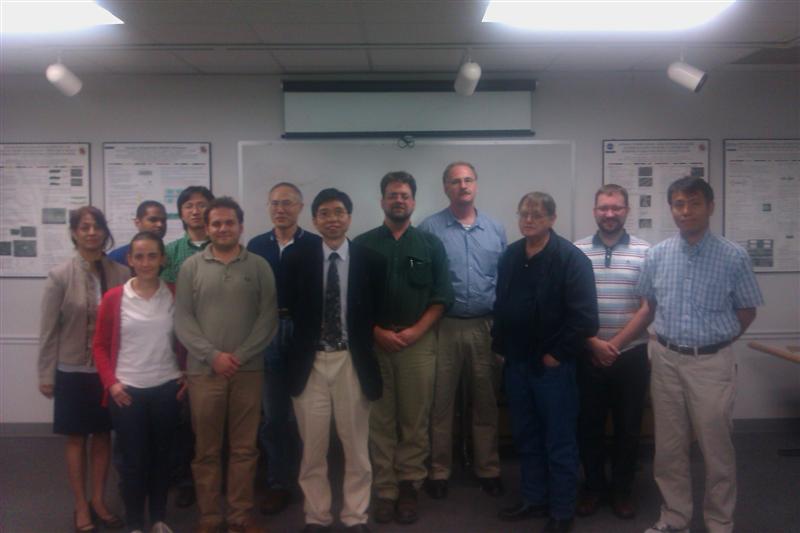
|
|
|
|
|

